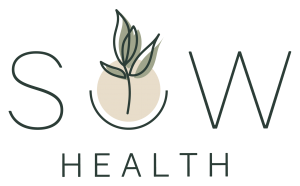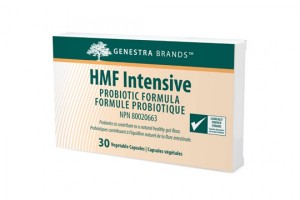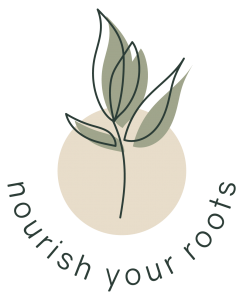September 6, 2012
As the kids head back to school, teachers head back to work and the weather cools down, many of us are forced to make lifestyle changes. We’ve left behind the summer hours, the long weekend road trips and the lazy hot days that often interfere with our good intentions and steer us off course. This makes fall the perfect time to review and revise your current routine, or introduce a new one!
Think, for a moment, about the things you do each day out of habit. Those are the things that have become second nature to you; the things you don’t even have to think about. As Aristotle said: “We are what we repeatedly do. Excellence, therefore, is not an act, but a habit.” I wholeheartedly believe we could replace excellence with “good health” and the statement would still ring true. By creating a healthful routine, we make it easier to stay on course and we become, by habit, healthy.
Routine is very important for child development, adrenal health (your organs that handle stress) and family connection. It creates structure and a sense of stability, which are so important in our busy lives. So why not take this opportunity to let your bad habits fall to the wayside and establish your new, healthful routine to get you back to good health!
So, what should your healthful routine look like? Here are my recommendations for easy changes that offer significant benefits to your health:
· Wake up 30 minutes early. I know, I know, many of us are prone to schedule everything down to the minute, including waking up at the latest we possibly can to get ourselves out the door on time. By waking up earlier, we allow ourselves more time to calm the mind, prepare the body and set the stage for a successful day ahead. It also allows time for the next three items on this list!
· Hydrate and jump start your system. Drink a glass of warm water with half a fresh lemon squeezed into it first thing in the morning. Not only does this help hydrate your body for the day ahead, but it also activates your liver and gallbladder. These organs aid digestion and will help you process and eliminate the toxins you’ll encounter throughout the day.
· Exercise. Before you fuel up, wake up by moving your body. Think of your morning exercise as warming up your body for the day ahead. Try yoga asanas, weights, cardio, walking, breathing or stretching for 30 minutes. If you can’t manage 30 minutes in the morning, do at least 10 minutes and save your 30 minute workout for later in the day. When you get your body moving, you rev up your metabolism. You also increase lymphatic flow which will help your immune system in the winter months ahead.
· Eat a breakfast of protein and take your supplements! We’ve all heard that breakfast is the most important meal of the day. What’s most important is that you start your day with protein. Protein starts your metabolism and regulates your blood sugar. It gives you an energy source that is more stable than simple sugars which helps you handle any stressors that you might encounter in the morning ahead. The beginning of the day is also a great time to take your supplements. A Naturopathic Doctor can help establish a supplement routine that will support your body individually, so make an appointment today for a plan that is unique to you.
· Pack a lunch. Knowing exactly what is in the food you consume is the best way to ensure you’re nourishing your body properly. When we eat out, it’s easy to make poor choices based on limited options available to us. Set a meal plan for the week ahead, as this will make it easier for you to shop and take the thinking out of the equation each day. Meal planning also assists you in rotating your foods which helps stop you from defaulting to “the usual”. Of course, the added bonus in packing a lunch is a healthier bank account, too! We’ve started a SOW health Pinterest account to help you with your meal planning and to make sure that you have access to ideas that keep you creative in the kitchen.
· Get outside. Fresh air does wonders for revitalizing the body, mind and spirit. Aim to get outside for at least 15 minutes each day. If you don’t include this in your morning (or afternoon) exercise, go for a quick walk around the block at lunch or after dinner, or sit outside when you’re enjoying a book, spending time with a friend or even having your meal.
· Put a limit on TV & computer time. Time spent watching the tube or planted in front of the computer is sedentary time where we’re typically not observing good posture and our minds are being distracted. It’s easy to get caught up and let time slip away from us or to feel it’s helping you unwind when really it’s not. Set a daily or even weekly limit to help you manage your time more effectively and feel more on top of things.
· Take time to unwind and breathe. There are lots of individuals out there who suffer from one form or another of sleep issues. Sometimes they’re unable to get to sleep and sometimes they’re unable to stay asleep. Often, it’s a result of our minds being over-stimulated. We seem to have lost touch with how to successfully unwind at the end of the day. We plonk ourselves down in front of the TV or the computer, or try to cram our to-do list items in until the moment our heads hit the pillow. It’s important to give your mind a rest and prepare yourself for sleep. With most of my patients I recommend 10 -15 minutes of YOU time. There are lots of ways to do this: write your to-do list down, so it’s not swirling around in your head; reflect on your day and keep a gratitude journal; do some deep breathing exercises; or take a book to bed. It helps if you can turn your lights down. Aim to be in bed between 10 p.m. and 11 p.m. each night. You want to get 7.5 to 9 hours of sleep each night to function optimally.

Personally, I historically have thought of routine as boring and senile (I know – harsh words for something I’m trying to promote). But, I have grown up in the past few years and have come to realize that your body does need the stability routine provides; I call it a healthy foundation. I’ve learned that this healthy foundation actually allows for more spontaneity in your life. With routine, your body starts to feel healthy and happy. It then has the space to allow for creativity, hobbies, and dream-catching.
Yours in health,
Sarah Oulahen, HBHSc, ND
Naturopathic Doctor at SOW Health











